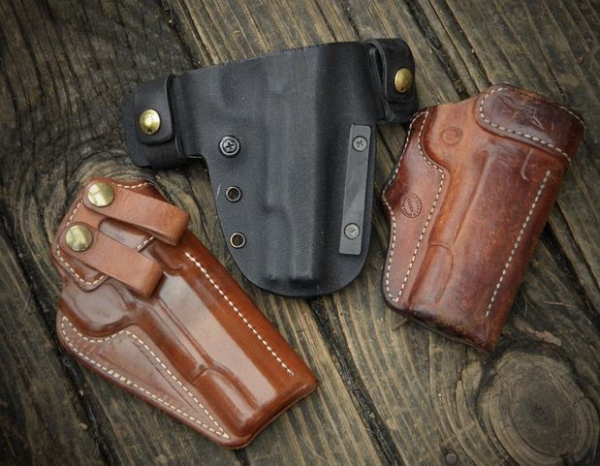Regular readers know I’m a huge fan of “consistency.” Reacting to a violent attack has enough problems without us creating more. For example, the “gun of the day” shooter who has a different type of handgun for each day of the week lacks consistency. Another inconsistency with concealed carry is too many variations on where and how the pistol is hidden. Then, there’s the shooter who takes one setup to the range for training or practice, and has a completely different getup for carry. To simplify our problem – stopping an attack – consistency is key, both on and off the range.

Learning requires repetition, especially complicated sequences, chunking several skills together. The ability to move, communicate, use cover – shooting if necessary – and thinking clearly under stress only comes with repeated practice. The goal is to develop these fundamentals to the point that they operate at a subconscious level. The mind says, “Threat.” Immediately, almost as if by instinct, you’re moving to cover, issuing verbal commands to the threat and drawing your pistol. Later, you’re thinking, “I don’t even remember drawing the gun.” This skill level only comes with practice, and plenty of it.
Cycling through Boyd’s O.O.D.A. Loop is the key to winning the fight. You’ve got to be able to make decisions quickly, forcing the threat(s) back to the Observation stage of their loop, reacting to you. There’s no time to hesitate while trying to remember where the handgun is, or what’s required to get it operational once out of the holster. Consistency -- removing as many variables as possible -- reduces your response time.
This “sameness” applies to range and carry gear. Although you don’t have to use the exact same gear for both, the closer they can be the better. Plus, there are some disadvantages to using the very same equipment for both.
Training and practice take a toll on your gear. Every part of kit gets abused. Pistols, magazines, holsters and belts all take a “lickin’.” Pistols are dropped during “New York Reloads” – dropping the empty pistol to draw a second weapon. Magazines are dropped, kicked around and stepped on. “But,” you ask, “holsters?” During single hand injury drills you’re manipulating the pistol with one hand or the other. You’re cycling the slide by hooking the rear sight against something and pushing. If there’s not any hard objects in the environment – corner of a wall or truck bumper – this is accomplished by using the top of the holster or belt. As you can imagine, it’s going to put some scratches on the gear.
Some of my carry holsters are slim profile, thin leather designs. They’ll do what’s needed, but they’re not going to hold up to hundreds of repetitions of cycling the slide against them. For training and practice I have kydex gear. But they hold the pistol in the same place, at the same angles.
Obviously, reality dictates you’re going to need a couple of options for how you carry. You either dress to conceal how you’re carrying, or the clothing you have to wear determines how you carry. Just keep it as consistent and as simple as possible. Then focus on practice.
Tiger McKee is director of Shootrite Firearms Academy. He is the author of The Book of Two Guns, AR-15 Skills and Drills, has a regular column in American Handgunner and makes some cool knives and custom revolvers. Visit Shootrite’s Facebook page for other details.